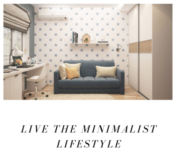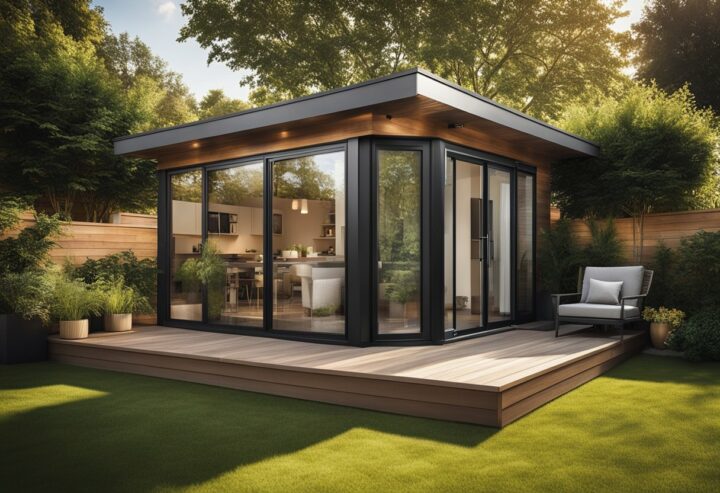Table of Contents
Prefabricated Accessory Dwelling Units: Your Quick Guide to Affordable Housing Solutions
Looking for a flexible housing solution? Prefabricated accessory dwelling units (ADUs) offer a smart answer for anyone needing extra space or wishing to enhance their property. These units are not just affordable and efficient; they can also be customized to fit your specific lifestyle needs, whether you’re looking for a guest house, rental space, or even a home office.

Building an ADU doesn’t just add value to your property. It can provide rental income or a cozy space for family members. With various designs and options available, you can create a unit that suits your preferences while complying with local zoning laws.
Exploring the right manufacturer and understanding the regulations in your area can make the process smoother. Whether it’s a stylish backyard cottage or a functional in-law suite, your dream ADU is closer than you think.
Key Takeaways
- Prefabricated ADUs provide affordable and customizable living solutions.
- Knowing local zoning laws is crucial for building an ADU.
- ADUs can serve multiple purposes, from rentals to personal retreats.
Benefits of Prefabricated ADUs
Prefabricated accessory dwelling units (ADUs) offer significant advantages for homeowners. These benefits include cost-effectiveness, shorter construction times, and improved energy efficiency. Here’s a closer look at each of these aspects.
Cost and Affordability
One of the biggest draws of prefabricated ADUs is their affordability. Compared to traditional building methods, prefabricated units often save you money in several ways.
- Lower Construction Costs: Since much of the work is done off-site, you avoid some labor costs and reduce on-site material waste.
- Quick Set Up: With faster installation, you can start generating rental income more quickly than if you were to build from scratch.
You can find reasonably priced options without sacrificing quality, making these units a smart choice for affordable housing solutions.
Construction Timeframe
Time is money, and prefabricated ADUs shine when it comes to construction speed.
- Rapid Assembly: Prefab units can often be set up in just days instead of months. This means less disruption to your daily life.
- Pre-Designed Options: Many ADUs come as ready-to-assemble kits. This streamlines the process and reduces surprises during construction.
With a faster build time, you can enjoy your new space sooner, whether it’s for family, guests, or rental income.
Sustainability and Energy Efficiency
Sustainability matters more than ever, and prefabricated ADUs can be an eco-friendly choice.
- Energy-Efficient Materials: These units are often built using materials that minimize environmental impact, helping you reduce your carbon footprint.
- Smart Design: Many ADUs incorporate features like better insulation and energy-efficient appliances, which can lead to lower utility bills.
By choosing a prefabricated unit, you not only create more living space but also contribute to a more sustainable future.
Design and Customization
When it comes to designing your prefabricated accessory dwelling unit (ADU), you have plenty of choices to make it feel like home. From the layout to the finishing touches, customization options let you tailor your space to fit your lifestyle and needs.
Interior and Exterior Options
You can pick from a variety of interior and exterior designs for your prefab ADU. Many companies, like Kithaus and Studio Shed, offer different styles to suit your taste.
Exterior Options:
- Siding Materials: Choose from wood, metal, or even composite materials.
- Roof Styles: Options range from flat to pitched roofs, adding unique character.
Interior Options:
- Floor Plans: Select a layout that works best for you—open concept or separate rooms.
- Finishes: Choose flooring, cabinetry, and colors that match your vision.
These choices help make your ADU reflect your personality.
Customization Options for Different Needs
Every homeowner has unique requirements. Modern ADUs come with versatile customization options.
Considerations:
- Size: Choose from small studio units to larger one-bedroom designs based on your needs.
- Functionality: Plan for a home office, guest space, or rental property.
Features to Include:
- Energy-Efficient Solutions: Integrate solar panels or energy-efficient windows.
- Smart Home Tech: Add smart lighting and thermostats for added convenience.
Whether you’re planning an office or a cozy guest unit, these customization features can enhance your living experience.
Understanding Zoning Laws and Regulations

When you think about building a prefabricated accessory dwelling unit (ADU), you need to pay attention to local zoning laws. These laws decide where and how you can build your ADU.
Key Factors to Consider:
- Lot Size: Zoning laws often set minimum lot sizes. You may need at least 1,500 to 12,000 square feet, depending on your area.
- Setbacks: These rules tell you how far your ADU must be from property lines. It’s crucial to follow these distances to avoid fines.
- Height and Size Limits: There might be regulations regarding how tall your ADU can be and its overall square footage. Check these limits to stay compliant.
Getting a permit is usually essential before you start construction. This process ensures your ADU meets all local requirements.
Building Codes are another critical aspect. These codes cover everything from electrical work to plumbing. Your ADU must meet these safety standards to be usable.
Each city can have different rules, so do your homework. Talk to local authorities or a contractor who knows the area’s regulations well. Keeping these points in mind will make your building process smoother and help you avoid headaches later.
Practical Uses for ADUs

Accessory dwelling units (ADUs) offer versatile options for homeowners. They can provide extra income through rentals, additional living space for family, or even a quiet place to work. Here are some practical uses for ADUs that you might find interesting.
Rental Opportunities and Source of Income
Turning your ADU into a rental unit can be a smart financial move. With the rising demand for affordable housing, having a separate entrance for your ADU makes it appealing to potential renters. You can rent it out as a long-term rental or even as a short-term vacation rental.
Many homeowners find that renting out their backyard cottage or guest house can cover mortgage payments or provide extra cash for maintenance. Additionally, this option offers flexibility, as you can adjust rental agreements based on your needs. If you have adult children or visitors staying with you often, a rental unit can serve multiple purposes while still giving everyone their own space.
Extended Living Space for Family
If you have family members who need a bit more privacy, an ADU is a perfect solution. It’s great for aging parents who want to live close by or for adult children returning home. With separate entrances, everyone can enjoy their autonomy.
This extra living space can also be useful for hosting guests or family reunions. Having a comfortable place for visitors can enhance your home’s functionality. Plus, it’s an excellent way to keep everyone connected while still maintaining personal space.
Home Offices and Private Retreats
In today’s world, having a dedicated workspace is essential. An ADU can serve as your very own home office or creative retreat. Imagine stepping into a space designed just for work, away from household distractions.
With the rise of remote work, more homeowners are turning ADUs into home offices. This setup can enhance productivity and provide a peaceful environment for meetings or focus tasks. Whether you’re an entrepreneur, freelancer, or just need a quiet spot to concentrate, an ADU can be your answer, offering both comfort and separation from your main home.
Choosing the Right ADU Manufacturer
When it comes to picking the right ADU manufacturer, there are a few things to consider. Here’s a quick guide to help you make a choice.
1. Quality Matters
Look for a manufacturer known for high-quality materials and craftsmanship. Good reviews can tell you a lot about how solid their prefab homes are.
2. Customizable Features
Think about what you want your detached ADU to have. Some manufacturers offer customizable features, like different floor plans or finishes. This means you can create a space that suits your style and needs.
3. Delivery and Installation
Check how the ADU gets to your site and how it’s put together. Some companies handle all of this, while others may leave you to find local help. Understanding this upfront can save you time and hassle.
4. Regulatory Knowledge
Ensure the manufacturer knows local building codes and regulations. They should help you navigate permit processes to avoid any legal issues.
5. Budget Considerations
Compare prices from different manufacturers. Don’t just look at base prices; factor in shipping, installation, and any extra features you want.
Choosing the right ADU manufacturer is key to creating the perfect extra space in your yard. Take your time and find the best fit for your project.
Frequently Asked Questions
When considering a prefabricated accessory dwelling unit (ADU), you probably have a lot of questions. This section covers the installation process, costs, zoning laws, customization options, durability, and financing for prefab ADUs.
What’s involved in the installation process for a prefabricated ADU?
The installation process for a prefab ADU usually starts with site preparation. You’ll need to clear the area and ensure it’s level. Once your site is ready, the unit can be transported and assembled on your property.
A foundation is often necessary, depending on the design. Many prefab manufacturers handle installation, making it simpler for you.
How much does it typically cost to set up a prefab ADU in my backyard?
The costs can vary widely based on size, materials, and location. On average, setting up a prefab ADU might range from $100,000 to $300,000 or more.
Remember to factor in additional costs like permits, utility connections, and landscaping.
Are there specific zoning laws I should know about when adding a prefab ADU in California?
Yes, California has specific zoning laws regarding ADUs. These laws can include requirements for size, height, and setbacks from property lines.
Before starting your project, check with your local planning department. They can provide the specific rules that apply to your situation.
Can I customize prefabricated accessory dwelling units to match my main residence?
Yes, many manufacturers allow customization of prefab ADUs. You can choose the exterior colors, materials, and interior layouts.
This way, your new unit can blend well with your main home’s style.
How do prefab ADUs hold up over time compared to traditional home additions?
Prefab ADUs can be just as durable as traditional additions if built well. The materials used and the quality of construction play a big role.
Regular maintenance can help keep your ADU in top shape, ensuring it lasts for many years.
What are the financing options for purchasing prefabricated accessory dwelling units?
There are several financing options available for prefab ADUs. You might consider personal loans, home equity loans, or specialized ADU financing programs.
Some local governments even offer grants or incentives to help cover costs, so it’s worth checking your options.

